Table of Contents
![]() About the Author
About the Author
![]() Reviews and Awards
Reviews and Awards
- Video Recovery
- SD Card Recovery
- Recycle Bin Recovery
- Recover Data from USB
- Recover Deleted Emails
- Hard Drive Not Showing Up in Windows
- Recover Unsaved Word Documents
- Recover Deleted Files
- Recover Files from Virus Infected Hard Drive
- Best Free Photo Recovery Software
- Recover Files from Formatted Hard Drive
Sometimes the error message of the Windows computer will appear all of a sudden. For example, Windows Runtime Errors, code 43, or "You need to format the disk", etc. Usually, the reason for these error messages is that some hardware failure has occurred on your computer. You need to fix them in time.
In this post, we will focus on an error message that happens on USB storage devices, that is the problem of ejecting USB mass storage device. You might see an error message saying "The device is currently in use. Close any programs or windows that might be using the device, and then try again." when you want to eject the USB storage device on the computer. Why did this happen? And how to fix it? Keep reading, we will tell you the answer.

What Cause the Problem of Ejecting USB Mass Storage Device?
Many Windows errors are actually caused by simple reasons, and it is the same with the USB mass storage device ejecting problem. Two major reasons would cause this problem, one is content occupied, and the other is USB driver failure.
Content Occupied: The reason is simple. This means that a background process or application is using files stored on the storage device, so you can't log out of the device now.
USB Driver Failure: This reason is more complicated than the other. This may be because your operating system may have a USB driver failure, which prevents the computer from ejecting the mass storage device.
The above two are the main reasons for problems when ejecting USB mass storage devices. Fortunately, no matter what situation you encounter, there are ways to solve the problem. In the following parts, we will list all methods that have proven to be effective. You can try them one by one until you can eject your USB flash drive or external hard drive from your computer safely.
Method 1. Close All the Open Files and Programs
The first step to solve the problem is to check whether all files and programs on your computer have been closed, if not, please close all files and programs, and then try again to see if the USB can be safely removed.
Method 2. Reboot the Computer
If you have confirmed that all files and programs have been closed, you can restart your computer and try again. For some simple hardware problems, restarting is efficient enough to solve the problem.
Method 3. Run Windows Hardware and Device Troubleshooter
Maybe Microsoft has aware that some minor hardware problems happen from time to time, so it developed with a built-in troubleshooter - Hardware and Device Troubleshooter. With this tool, users can fix those not serious problems by themselves. Here's the detailed guide.
Step 1. Right-click the Windows key, choose Settings.
Step 2. Find Update and Security.
Step 3. Click Troubleshoot to enter the Windows troubleshoot panel.
Step 4. Find and choose Hardware and Devices, then click "Run the troubleshooter".
Step 5. Your computer will start to scan your computer and install drivers and updates. After the process is finished, click "Apply this fix" to restart your computer.

Method 4. Use Task Manager to End Tasks
The next method we want to introduce is to use the Task Manager to remove the mass storage device. Here's how to do it.
Step 1. Right-click the Windows key, choose Task Manager.
Step 2. Right-click any process or program which seems to interfere with the safe removal of your drive, and chooses End task to terminate it.
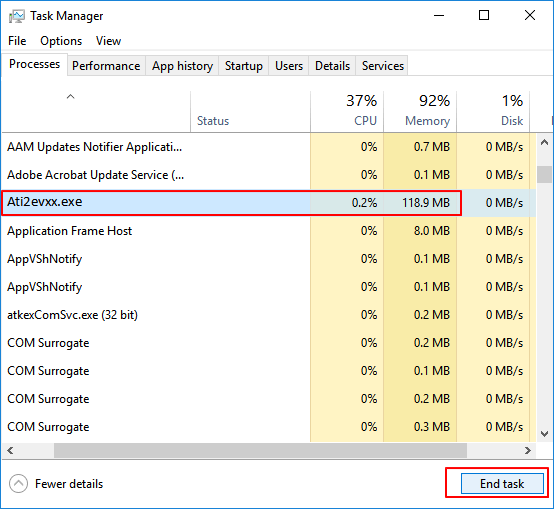
Method 5. Eject with Device Manager
On a Windows computer, users can manage all the devices in Device Manager. As a result, we can try to eject the USB mass storage device with it. Here's how to do it.
Step 1. Right-click the Windows key, choose Device Manager.
Step 2. Click Disk drives and check the configuration of each device under disk drives.
Step 3. Under one of the options, we found that we could select between "quick removal" and "performance".
Step 4. Choose performance. You need to shut down and power back up for the selection to take effect. Now you can eject your external hard drive.

Method 6. Update USB Drivers
If you have tried all the above methods, but no one works, the last resort is to update USB drivers. If USB driver malfunction is the reason why you have a problem ejecting the USB mass storage device, update the driver might solve the problem. Please follow the steps below to update USB drivers.
Step 1. Right-click the Windows key, choose Device Manager.
Step 2. Under Device Manager, find and expand the Universal Serial Bus controllers category.
Step 3. Right-click the USB device, choose Update driver. Select the "Search automatically for updated driver software" option, and Windows will start looking for the newer version of the USB driver to install.
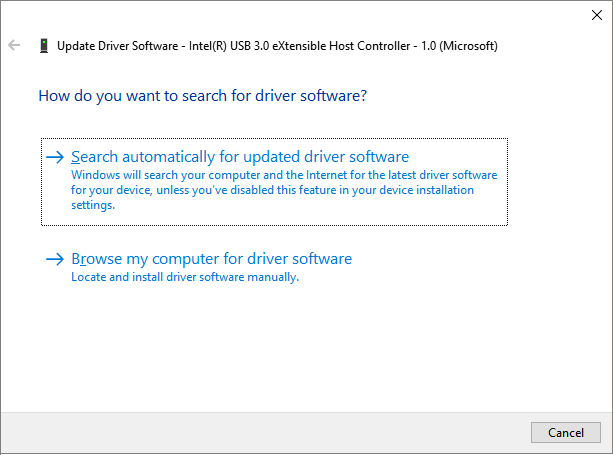
Safely Remove: You Might Don't Need it Anymore
We have been told many times that when we want to unplug the mass storage devices, it is better to eject the device than to directly pull it out. This is to protect the device data from corrupted.
Recently, in its support guidance, Microsoft confirmed that it has added a feature called "quick removal". This feature allows users to unplug the USB from the computer at any time, except when the user is writing files to it. The quick removal feature is the default setting for each new drive you plugin as of Windows 10 version 1809. So if you are using Windows 10 version 1809, you don't need to eject your USB flash drive anymore.
Bonus Tip: How to Recover Lost Files from Mass Storage Devices
Many reasons would lead to data loss on a USB drive or an external hard drive. For example, accidental deletion, virus attack, OS crash, and partition loss. These are more severe conditions than directly pull out the USB drive. In these data loss situations, users need to apply data recovery software to retrieve the data, EaseUS data recovery software is a perfect choice.
Designed for data recovery, EaseUS Data Recovery Wizard has helped millions of users for over 17 years. The most attractive thing about it is that it is easy to operate. You just need three simple steps to recover the data you want. If you are interested in it, download the software for free, and follow the detailed guide to see how to use it to recover data.
Step 1. Select a location and start scanning
Launch EaseUS Data Recovery Wizard, hover on the partition/drive where the deleted files were stored. Click "Scan" to find lost files.
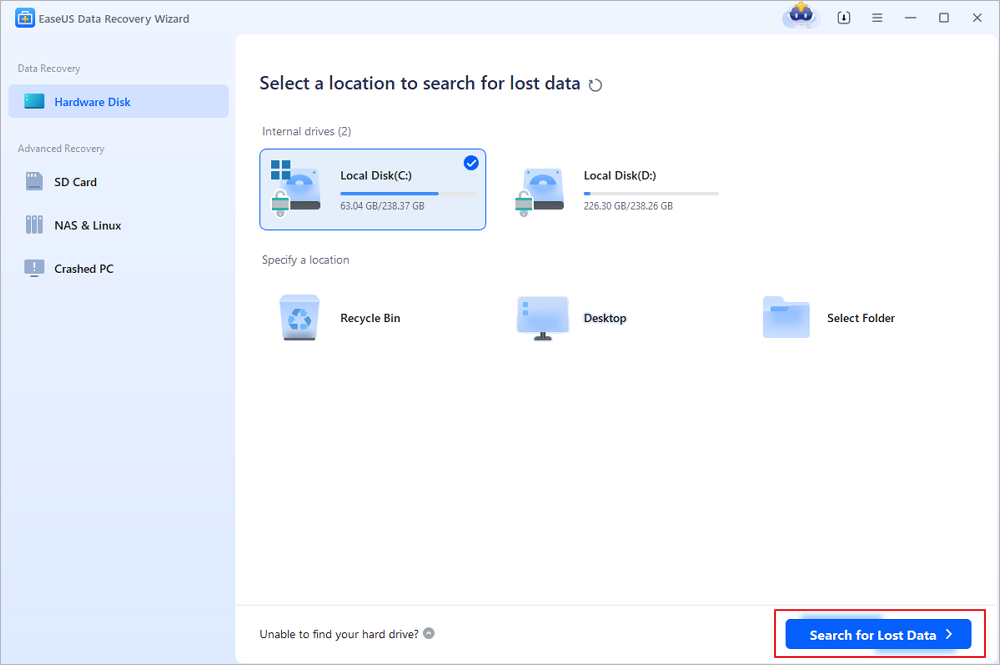
Step 2. Select the files you want to recover
When the scanning has finished, select the deleted files you want to recover. You can click on the filter to display only the file types you want. If you remember the file name, you can also search in the "Search files or folders" box, which is the fastest way to find the target file.
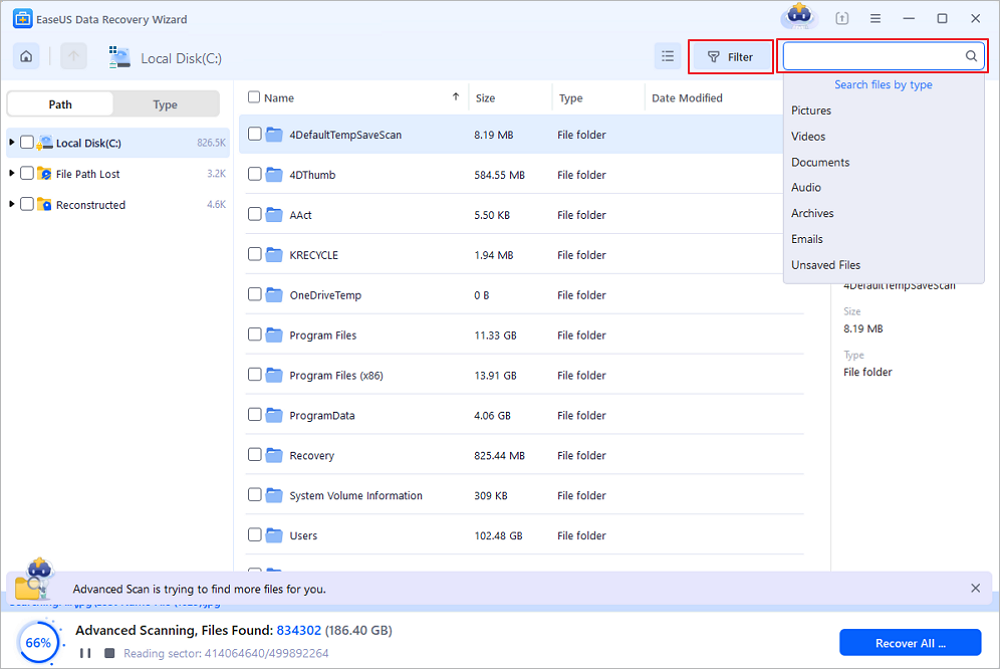
Step 3. Preview and recover deleted files
Preview the recoverable files. Then, select files you want to restore and click "Recover" to store the files at a new storage locations instead of the disk where the data was previously lost.
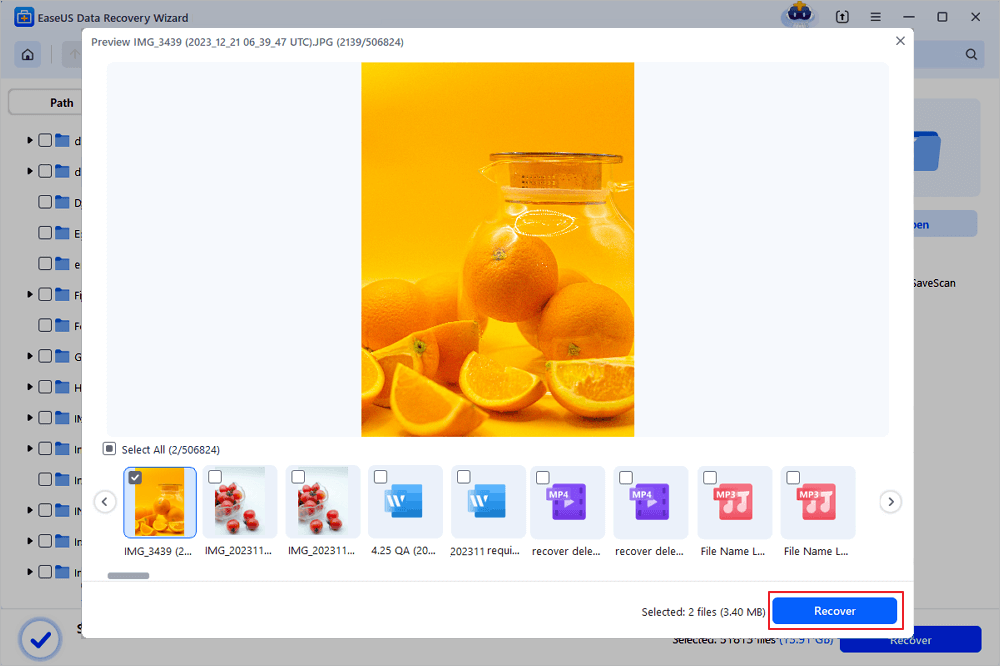
Conclusion
That's all about how to solve the problem of ejecting USB mass storage device. Don't worry if you're in this situation. First close all the files and programs, then try the above methods one by one until solve your problem. Moreover, if you are interested in free data recovery, download EaseUS Data Recovery Wizard free version to have a try.
Was This Page Helpful?
Cedric Grantham is a senior editor and data recovery specialist of EaseUS. He mainly writes articles and how-to tips about data recovery on PC and Mac. He has handled 10,000+ data recovery cases and is good at data recovery of NTFS, FAT (FAT32 and ExFAT) file systems, and RAID structure reorganization.
Approved by Evan Galasso
Evan Galasso is a digital forensics and data recovery engineer with over 10 years of experience in the field. He presents opinions on the current state of storage media, reverse engineering of storage systems and firmware, and electro-mechanical systems of SSDs and HDDs.
-
EaseUS Data Recovery Wizard is a powerful system recovery software, designed to enable you to recover files you’ve deleted accidentally, potentially lost to malware or an entire hard drive partition.
Read More -
EaseUS Data Recovery Wizard is the best we have seen. It's far from perfect, partly because today's advanced disk technology makes data-recovery more difficult than it was with the simpler technology of the past.
Read More -
EaseUS Data Recovery Wizard Pro has a reputation as one of the best data recovery software programs on the market. It comes with a selection of advanced features, including partition recovery, formatted drive restoration, and corrupted file repair.
Read More
Related Articles
-
Is It Safe to Delete Windows Update Cleanup Folders/Files? Get Answers Here
![author icon]() Brithny/2023/11/08
Brithny/2023/11/08 -
How to Initialize Disk Without Losing Data in Windows 10/11
![author icon]() Jean/2023/11/28
Jean/2023/11/28 -
BSOD After Installing SSD | Solved Without Losing Data
![author icon]() Dany/2024/01/29
Dany/2024/01/29 -
How to Repair PDF Files Online [Easy Guide]
![author icon]() Cedric/2024/02/19
Cedric/2024/02/19